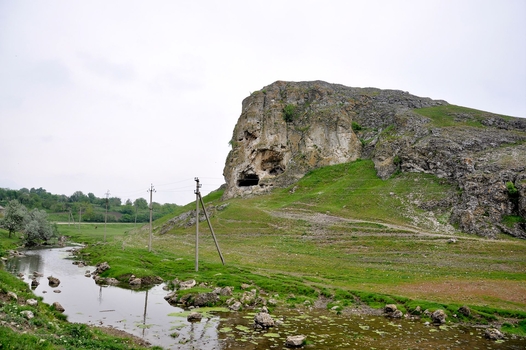The Butești Cave
Description
The Butești Cave is a very picturesque and interesting cliff, about 2 km long, 60-125m wide. On the side of the cliff facing the village of Butești, there is a cave about 9 square meters deep and 2.5 meters high.
This land is full of legends and history. The locals say that more than two centuries ago, these places were covered in forests. A huge snake-shaped rock, with a cave at its edge, also rested here.
It is said that the rock was once the site of a Turkish garrison. The smell of gold has awakened the taste of many adventurers, treasure hunters. Landlord Butescu, an archaeologist by profession, gathered a large group of needy people and started digging for treasure.
They worked hard and thoroughly until early winter. Some of them didn't last any longer, others stayed.
Finally, they found those treasures and shared the Turkish gold brotherly. Boyar Butescu left, and his men stayed to live out their lives near the cave, thinking they would find more. And they set up a household and set about living. In honour of their leader they named their hamlet - Butești. And it has remained Butești until today.
In the historical novel "Elena of Moldavia", an anonymous author mentions one of Stephen the Great's battles with the Tatars: "To meet the enemy they came out at dusk. At the head of the army rode Stefan Voda and the cavalry leader Boldur, protected on both sides by the 24 archers. At dawn, they reached Butești, a village where the Camenca stream cuts a high cliff in two. The Vodă stopped the army and surveyed the surroundings, the steep, vertically split walls of the cliff. Vodă left Boldur with a small team on the crest of the cliff, and he and the other part of the army hid in the forest.
The Tartars, seeing the troops on Țâglău, came running and fell into the chasm, and Ștefan Vodă and his troops crushed them for good.


 ro
ro
 ru
ru
